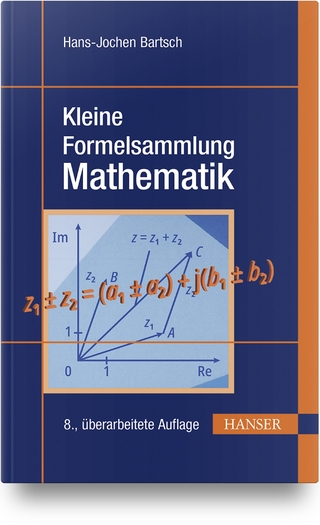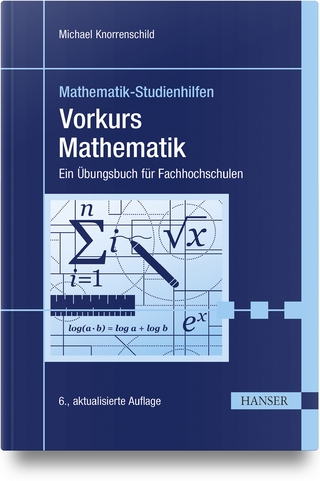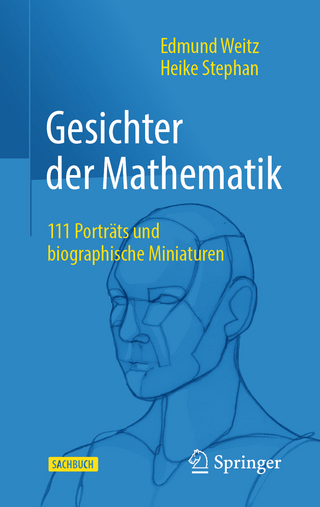
String Figures as Mathematics?
Springer International Publishing (Verlag)
978-3-319-38394-1 (ISBN)
Eric Vandendriessche has obtained the French "Agrégation" of mathematics (1992). In 2010, he received his Ph.D. in History and Philosophy of Sciences from Paris Diderot University. Eric Vandendriessche is a member of the Sciences–Philosophy–History French laboratory (UMR SPHERE 7219 – CNRS & Paris Diderot University). He is currently carrying out research in ethnomathematics, doing fieldwork in Papua New Guinea and Vanuatu (Melanesia, South Pacific). The aim of his work is to study the mathematical rationality that underlies activities involving geometrical and algorithmic practices (such as string figure-making or sand-drawing in Oceania), while attempting to analyze how the practitioners of these activities conceive - or have conceived - them in societies of oral tradition. Eric vandendriessche is in charge of the "String figures: cultural and cognitive aspects of a mathematical practice" research program (2012–2015), financially supported by the city of Paris (program "Emergences" 2011).
PART I: HOW TO STUDY STRING FIGURE-MAKING.- Chapter 1: String Figures and Ethnography.- Chapter 2: A Conceptualization of String Figure-Making.- PART II: MATHEMATICS AND STRING FIGURES.- Chapter 3: W.W. Rouse Ball's Mathematical Approach to String Figures.- Chapter 4: Thomas Storer and the Concept of Heart-Sequence.- PART III: ANALYSING STRING FIGURE ALGORITHMS.- Chapter 5: Heart-Sequences and "Look-alike" String Figures.- Chapter 6: Understanding Transformations.- PART IV: STRING FIGURES IN THE FIELD.- Chapter 7: Cultural and Cognitive Aspects of String Figure-Making in Two Different Societies.- Chapter 8: Comparison of the Trobriander and Guarani-Nandeva String Figure Corpora.- Chapter 9: Conclusion.- References.- Annexes.
lt;p>"Vandenessche (Paris Diderot Univ., France) divides the volume-which is really many books in one-into four parts: 'How to Study String Figure-Making,' 'Mathematics and String Figures,' 'Analysing String Figure Algorithms,' and 'String Figures in the Field.' ... Summing Up: Highly recommended. Upper-division undergraduates through faculty and professionals." (D. V. Feldman, Choice, Vol. 53 (3), November, 2015)
"Vandendriessche gives a mathematical analysis of string figure-making. ... The author does recommend that every reader try following his instructions to create some of the string figures. I found his instructions clear and the multicolored pictures helpful. ... Anthropologists and ethnomathematicians will benefit from the richness of Vandendriessche's discussion." (Joel Haack, MAA Reviews, March, 2015)
| Erscheinungsdatum | 21.10.2016 |
|---|---|
| Reihe/Serie | Studies in History and Philosophy of Science |
| Zusatzinfo | XIX, 392 p. 1234 illus., 134 illus. in color. |
| Verlagsort | Cham |
| Sprache | englisch |
| Maße | 155 x 235 mm |
| Themenwelt | Mathematik / Informatik ► Mathematik ► Allgemeines / Lexika |
| Mathematik / Informatik ► Mathematik ► Geschichte der Mathematik | |
| Naturwissenschaften | |
| Schlagworte | Analysing String Figure Algorithms • Analysing String Figure Procedures • Conceptualization of String Figure-Making • Cultural and Cognitive Aspects of String Figure-Ma • Cultural and Cognitive Aspects of String Figure-Making • Double-sided Lozenge String Figures • History of mathematical sciences • History of Mathematics • Mathematical Activity of Creating String Figures • Mathematics • mathematics and statistics • Mathematics and String Figures • Modes of Conceptualization of String Figure • Names of String Figures • philosophy of science • String Figure-Making • Thomas Storer and the Concept of Heart-Sequence |
| ISBN-10 | 3-319-38394-9 / 3319383949 |
| ISBN-13 | 978-3-319-38394-1 / 9783319383941 |
| Zustand | Neuware |
| Haben Sie eine Frage zum Produkt? |
aus dem Bereich


